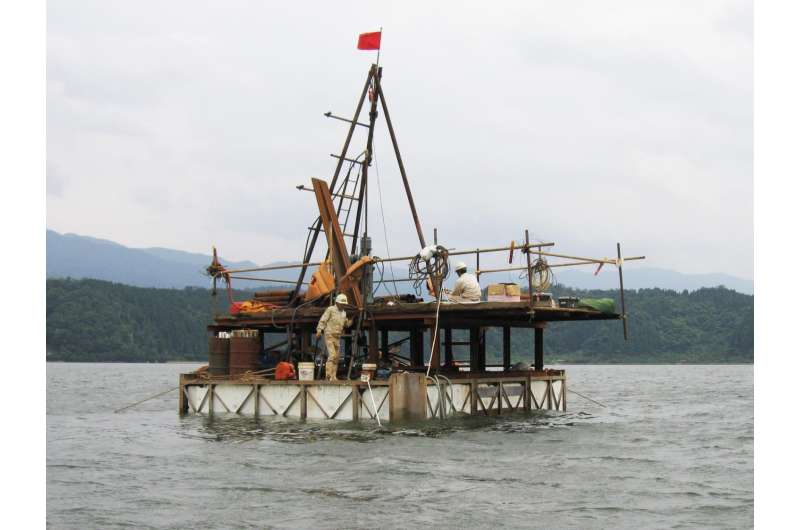Climate seesaw at the end of the last glacial phase

The climate of the Earth follows a complex interplay of cause-and-effect chains. A change in precipitation at one location may be caused by changes on the other side of the planet. A better understanding of these "teleconnections"—the linkages between remote places—may contribute to a better understanding of local impacts of future climate change. A look into the climate of the past helps to investigate the teleconnections.
An international team of Japanese, British, Australian, and German scientists, with the participation of the GFZ German Research Centre for Geosciences, has investigated Japanese lake sediments to decipher the interplay between local climate changes on the northern hemisphere about 12,000 years ago. Their results, now published as Scientific Report, show that a regional warming in Europe caused a cooling and an increase in snowfall in East Asia.
The Younger Dryas was a cold period of about 1200 years at the end of the last glacial phase, and occurred about 12,800 to 11,600 years ago. While the world had already turned toward a warmer climate, there was an abrupt backlash to much colder conditions. The average global temperature fell by three to four degrees within only a few decades.
Why? This is still unclear. The team investigated sediments from Lake Suigetsu in Japan to reconstruct East Asian climate change during the Younger Dryas. The scientists were able to show that the cold period was divided into two different phases showing climate trends opposite to those in Europe, which the scientists explain by teleconnections.
Achim Brauer, director of the Department Geoarchives, says, "Little by little, we come to understand the interplay between regional climate changes at the end of the last glacial phase. This brings us closer to our ultimate aim of anticipating regional impacts of future global climate change".
During the first half of the cold period until about 12,200 years ago, Europe's climate was cold and dry, while the second half was more warm and humid. The scientists assume that this warming was related to changes in atmospheric pressure that pushed cold polar air masses, and with them, the westerlies that determine the European climate further north, which before, during the glacial phase, reached down to Southern Europe, transporting more moisture.
A bi-partition of the Younger Dryas climate is also seen in East Asia, but in a reverse succession. Here, the first half is comparatively warmer, while the second half's climate is cold, with heavier snowfall.
This climate seesaw is caused by teleconnections, the scientists assume—more humid air masses in Europe mean that some moisture is transported even further eastward, causing heavy snowfall in central Asia. A thick snow cover formed and caused a cooling of the air masses over East Asia. This had an effect on the Asian monsoon, with a stronger winter monsoon and a slightly weaker summer monsoon resulting in winters with heavier snowfall and drier summers.
The algae of the investigated lake, and the spores and pollen from surrounding plants that were deposited throughout the centuries of the cold period, as well as changes in the chemical composition of the sediments, provide the scientists with important information on regional changes in temperature and rainfall. Since the sediments were deposited seasonally, they can be compared with sediments of European lakes at annual time resolution.
Furthermore, Greenland ice cores and marine sediments from the North Atlantic provide information on large-scale temperature changes of the northern hemisphere. Like parts of a puzzle, these regional archives provide an overall picture of the climatic changes during that time, and show how regional climate changes were influencing each other.
More information: Schlolaut, G., Brauer, A., Nakagawa, T., Lamb, H.F., Tyler, J.J., Staff, R.A., Marshall, M.H., Bronk Ramsey, C., Bryant, C.L., Tarasov, P.E., 2017. Evidence for a bi-partition of the Younger Dryas Stadial in East Asia associated with inversed climate characteristics compared to Europe. Scientific Reports, 7:44983. DOI: 10.1038/srep44983
Journal information: Scientific Reports
Provided by Helmholtz Association of German Research Centres



















